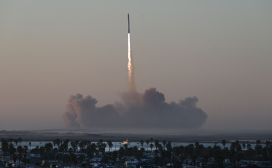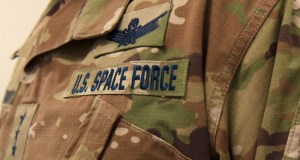Space Force needs to make acquisition a critical capability, study says

One of the keys to an agile Space Force acquisition system is to remove barriers between operators and buyers and treat acquisition as a core function of the newest military branch, a study from the RAND Corporation suggests.
The study lists other recommendations, including increasing the volume of information that is shared with industry, and giving decision-making subordinates more autonomy. The Space Force has been working on a new method of acquisition to try and avoid the pitfalls of the industrial processes other military services use, which have been criticized for their sluggish pace and lack of ability to keep up with tech innovations.
The Space Force “is highly reliant on technology, even more so than other services,” the study states. “This dependence on technology necessitates [the Space Force] having a close, trusting, collaborative relationship with industry.”
Senior space leaders have echoed the call for an agile system that can keep pace with tech, saying that one of the advantages of starting a new service is the ability for it to chart its own acquisition path.
“We are a startup company ourselves,” Gen. John Raymond, chief of space operations, told lawmakers in March 2020. “We have to go at speed.”
Other key recommendation from the 87-page report include having a work force of “experts,” having an adaptive technical architecture that defines the overarching needs of the force and hosting “on-ramp” events to test new tech from industry. Overall, there needs to be trust between government and the private sector, the report adds.
“To effect real change, acquisition needs to be reimagined and understood as a warfighting capability critical to the mission,” the study states.
The Space Force remain responsible for its own acquisition strategy, a plan that member of Congress have been waiting to see. Some key lawmakers have expressed disappointment in the lack of progress by the Space Force on that strategy.
Frank Kendall, secretary of the Air Force and top civilian that oversees the Space Force, recently merged Air Force acquisition offices to focus on space. He moved the Space Acquisition Directorate, which was nested in the acquisition, technology and logistics office, into the Space Acquisition and Integration Office, he announced Tuesday.
“One area where we have not done enough yet is in the acquisition capacity of the Department of the Air Force,” he said during the Space Foundation’s Space Symposium Tuesday.





